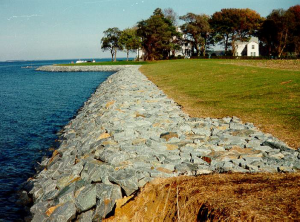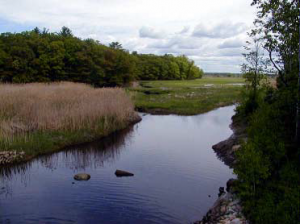NCCOS-sponsored researchers have found that hardened shorelines have negative effects on fish; invertebrates, such as oysters and crabs; and submerged aquatic vegetation. Shoreline hardening is an attempt to stabilize coastal land and protect residential and commercial infrastructure along the coast by building structures, like seawalls, to hold back the sea and prevent the loss of sediment.

Last month, the project team presented the findings of this six-year study in the Chesapeake Bay and coastal bays of Delaware and Maryland to natural resource managers from Delaware, Maryland, and Virginia. The team found that overall biological diversity was higher along natural shorelines when compared with hardened shorelines.
The abundance of crabs; bivalves, such as clams and oysters; and many fish species declined as the amount of hardened shoreline increased. The team also found that hardened shorelines had a negative effect on the size, density, and diversity of submerged aquatic vegetation. Additionally, hardened shorelines, along with land development, facilitated the spread of the non-native Phragmites reed. Hardened shorelines and shorelines invaded by Phragmites showed significantly less spawning by Atlantic silverside fish.

Project researchers will continue to share the findings with regional managers, and are slated to make a presentation to the Chesapeake Bay Program Scientific, Technical Assessment and Reporting (STAR) team on December 3, 2015.
